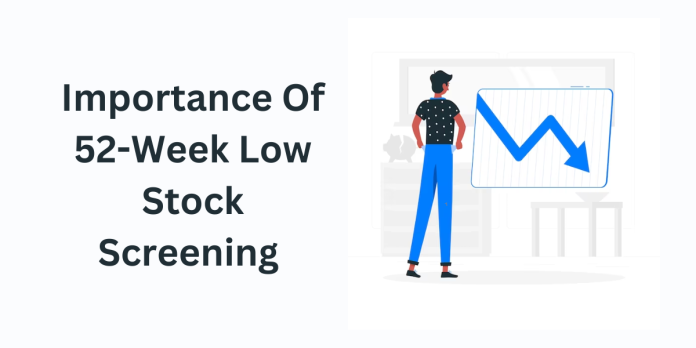If you ever felt lost in the catching breakout of the stock market? Well, one tool that can guide you through is the 52-week high/low – a fancy term that simply tells you the highest and lowest prices of a stock in the past year. In this article, let’s talk about the down-to-earth side of the 52-week low, understand what it means, and figure out how you can use it to make smarter decisions in the stock market.
52-Week Low
The 52-week low is like a stock’s rock bottom, the lowest point it hit in the last year. It’s not about predicting the future, but more about looking back to see how the stock has been handling its highs and lows. We figure this out by checking the daily closing prices over the past year, keeping it simple and sweet.
Calculating 52-Week Low
To find the 52-week low, we just need to track a stock’s daily closing prices over the past year. You can easily find this info on financial websites or apps. We’re basically looking for the lowest closing prices during this time that’s our 52-week low.
Significance of 52-Week Low
Why should you care about this low point? Well, it’s like looking at a stock’s photo album from the last year. If a stock is hanging out near its 52-week low, it might be a bit of an underachiever lately. This info can help you decide whether to stick with it, sell it, or maybe even grab some at a discount.
Why Investors Track 52-Week Low
Investors keep a close eye on the 52-week low for a couple of reasons. First off, it’s a bit like finding a sale in a store if a stock is near its 52-week low, some folks might see it as a bargain and decide to buy. On the flip side, if a stock is hanging out near its lowest point, it could be a sign to think about selling or avoiding it.
Pros and Cons of Using 52-Week Low as an Indicator
Like any tool, the 52-week low has its strengths and weaknesses. It’s great for giving you a big picture of how a stock has been doing over the long haul. But it might not be so great at telling you what’s going to happen tomorrow. Also, it doesn’t always consider things happening outside the stock world that could shake things up.
Using 52-Week Low to Evaluate Stocks
If you spot a stock that recently hit its 52-week low, it might be like finding a hidden gem. People often think it’ll bounce back up, and that could be a good time to buy. On the other hand, if a stock is chilling near its 52-week low, it could mean trouble, and you might want to think about selling or avoiding it.
Factors Influencing a Stock’s 52-Week Low
Now, what makes a stock hit its 52-week low? One big factor is how the company is doing financially. If it’s making bank, the stock might be riding high. But if things aren’t going so well, the stock might take a dip. Also, what’s happening in the big wide world can mess with a stock’s price too – things like market changes, interest rates, or big news about the company.
Read: The Significance Of A 52-Week Breakout
52-Week Low in Combination with Other Metrics
Using the 52-week low with other tools is like having a superhero team. Metrics like P/E ratios or dividend yields can give you a fuller picture of what’s going on. Think of it as getting a second opinion to make sure you’re not missing something important.
The 52-week low is your stock’s way of saying, “Hey, this is the lowest I’ve been in a year!” By understanding how to read it, you can make smarter choices when it comes to buying or selling stocks. Remember, it’s just one piece of the puzzle, but combining it with other info can help you navigate the stock market with a bit more confidence.


